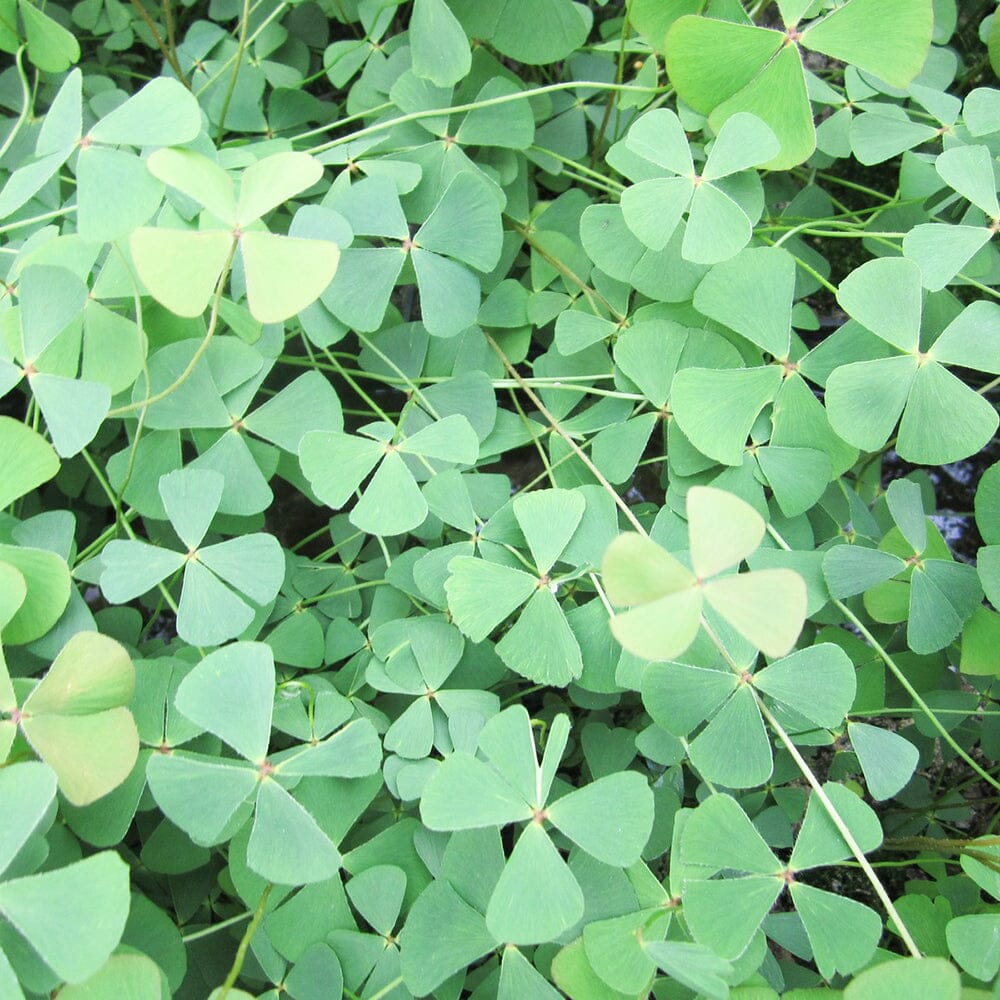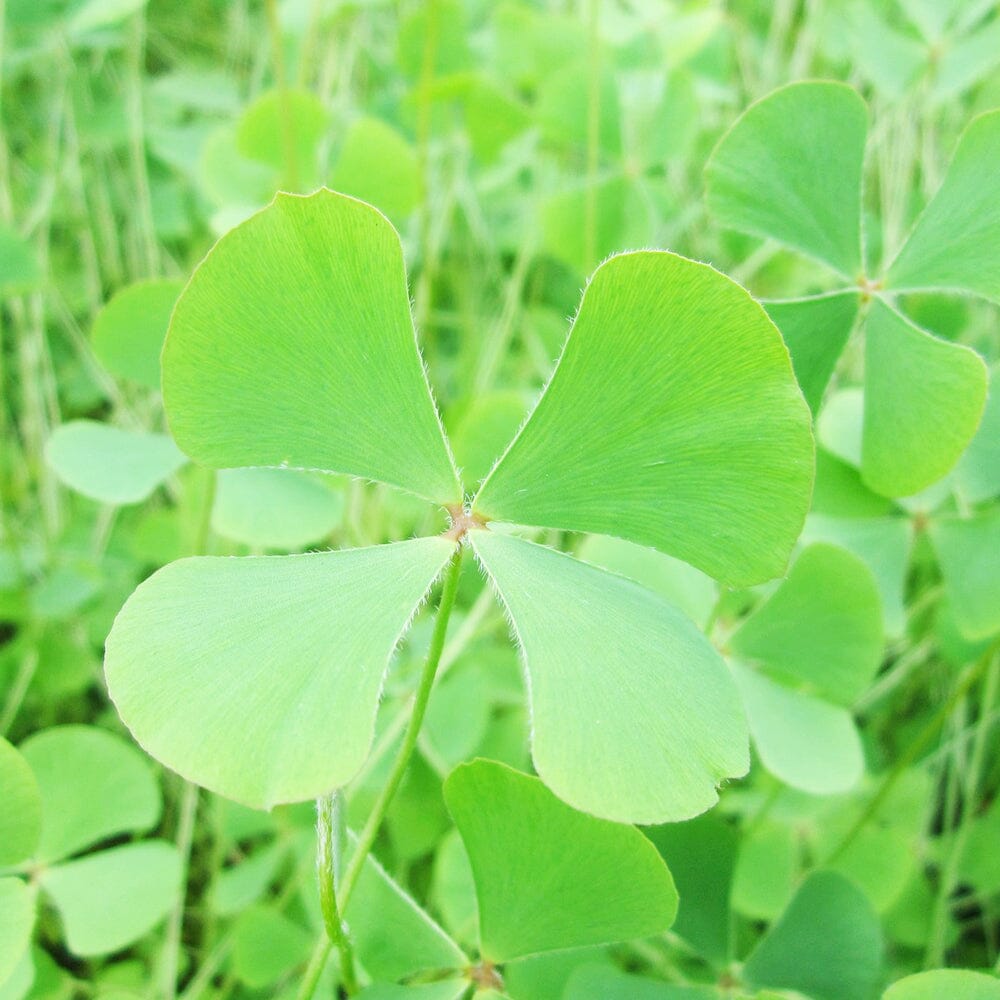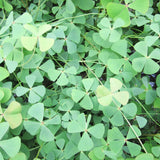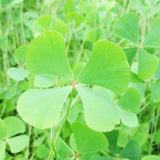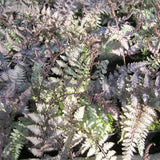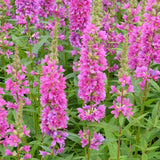Marsilea Quadrifolia Aquatic Pond Plant - Water Shamrock
Marsilea quadrifolia, commonly known as four-leaf clover or water clover, is a fascinating aquatic plant that belongs to the family Marsileaceae. It is known for its unique appearance, resembling a clover with four leaflets.
Here is a detailed description and care guide for Marsilea quadrifolia:
Description:
Appearance: Marsilea quadrifolia features delicate, clover-like leaves that grow in clusters. Each leaf is divided into four leaflets, giving it a distinct four-leafed appearance. The leaflets are typically green but can sometimes exhibit reddish or bronze tones, especially under high light conditions.
Growth habit: This plant has a creeping and spreading growth habit, forming a dense carpet-like mat of foliage. It sends out runners, known as rhizomes, which produce new plantlets at the ends. The size of the leaves and overall growth pattern may vary depending on the specific environmental conditions.
Size: Marsilea quadrifolia can reach a height of 2 to 5 inches (5 to 13 centimeters) under optimal conditions, forming a low-growing carpet.
Care Guide:
Lighting: Marsilea quadrifolia prefers moderate to high lighting levels. Provide at least 2 to 3 watts per gallon of light intensity to promote healthy growth. Use full-spectrum bulbs or LED lights specifically designed for aquatic plant growth.
Water conditions: This plant thrives in slightly acidic to neutral water conditions with a pH range of 6.0 to 7.5. It can tolerate a wide range of water hardness but generally prefers slightly soft to moderately hard water. Maintain a water temperature between 68°F (20°C) and 82°F (28°C).
Substrate: Marsilea quadrifolia requires a fine-grained substrate, such as sand or fine gravel, to establish its root system. A nutrient-rich substrate or the addition of root tabs can provide essential nutrients for healthy growth.
CO2 and nutrients: While Marsilea quadrifolia can grow in low to medium CO2 levels, providing additional CO2 supplementation will promote healthier and faster growth. Regular fertilization with a comprehensive aquatic plant fertilizer will ensure the plant receives necessary nutrients.
Maintenance: Trim the plant regularly to prevent it from becoming too dense and to promote new growth. Gently remove any dead or decaying leaves to maintain the overall health and appearance of the plant. Monitor and control algae growth to prevent it from overtaking the Marsilea quadrifolia carpet.
Propagation: Marsilea quadrifolia spreads through runners or rhizomes that produce new plantlets. Once the plant has established a strong root system, it will send out runners, allowing it to expand and create a dense carpet. You can propagate it by separating the runners and replanting them in desired areas.
Overall, Marsilea quadrifolia is a captivating and unique aquatic plant that adds a touch of charm to aquariums and planted tanks. With proper care and maintenance, it can create a lush and natural-looking carpet, resembling a field of four-leafed clovers.
Selection of Plants:
Choose appropriate oxygenating plants that are suitable for the size and depth of your pond. Common oxygenating plants include Hornwort (Ceratophyllum), Anacharis (Elodea canadensis), Waterweed (Elodea densa), and Watermilfoil (Myriophyllum species).
Placement:
Place oxygenating plants in the water at a depth where their foliage is fully submerged. Distribute the plants evenly throughout the pond, ensuring they receive adequate sunlight for photosynthesis.
Water Quality:
Oxygenating plants play a crucial role in maintaining good water quality by absorbing excess nutrients, competing with algae for resources, and releasing oxygen through photosynthesis. Regularly monitor water quality parameters such as pH, ammonia, nitrite, and nitrate levels to ensure they are within suitable ranges for the plants.
Nutrient Levels:
Oxygenating plants benefit from moderate nutrient levels in the water, but excessive nutrients can lead to rapid algae growth. Avoid over-fertilization or excessive organic matter accumulation in the pond, as it can negatively impact oxygenating plants.
Pruning and Maintenance:
Regularly thin out and prune oxygenating plants to prevent overcrowding and ensure healthy growth. Remove any dead or decaying plant material promptly to maintain water quality and prevent the release of excess nutrients.
Winter Care:
Some oxygenating plants may need special attention during winter, especially in colder climates. If your pond experiences freezing temperatures, consider moving potted plants indoors or provide insulation to protect them. In milder climates, oxygenating plants may continue to grow during winter, providing oxygen and supporting the pond ecosystem.
Propagation:
Some oxygenating plants can be propagated by dividing or taking cuttings. Follow specific instructions for each plant species to propagate them successfully and maintain a healthy population in your pond.
Monitoring and Control:
Regularly observe the growth and condition of oxygenating plants to identify any signs of disease, pests, or nutrient deficiencies. If needed, control excessive growth by removing excess plant material, but be careful not to remove too much at once, as it can disturb the pond's ecological balance.
Introduction of New Plants:
Before introducing new oxygenating plants into your pond, ensure they are free from pests, diseases, or invasive species. Avoid introducing non-native species that may become invasive and harm the local ecosystem. By following these general tips and care guidelines, you can maintain healthy oxygenating plants in your pond. They will contribute to the overall oxygenation of the water, provide habitat for beneficial organisms, and promote a thriving pond ecosystem.








